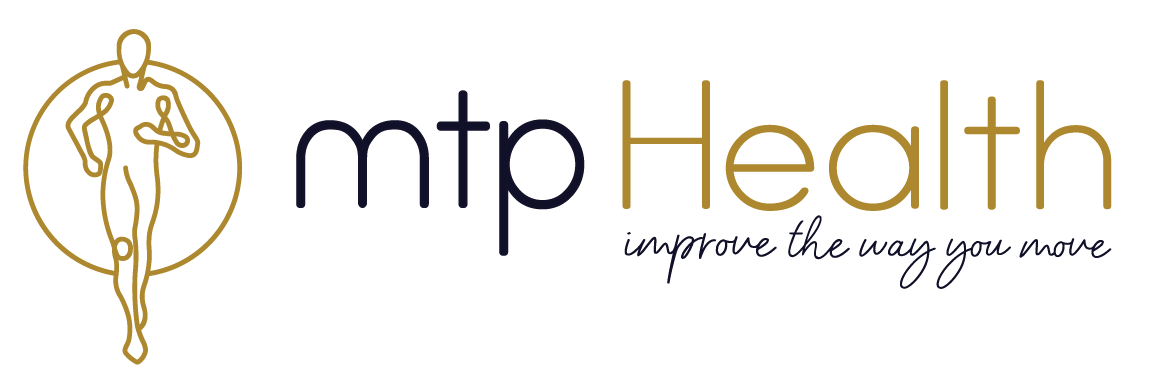How We Actually Get Stronger – Part 2 [Muscle Contractile Component]
When breaking down what goes into muscular strength it’s important to firstly consider the person who is trying to build it.
Are they someone who is in pain, not very active, in their older years and doesn’t have lot of muscle mass? Or are they an athlete trying to gain strength and size in order to improve their performance in their chosen sport? Once we have considered exactly who we have in front of us we can start to determine what are the necessary areas of strength that need to be improved in order to produce the desired result that person is after.
The first part of our series gave us some insight into why these questions are important to answer. A lot of people confuse strength with things such as muscle hypertrophy and muscular power. Similarly, people rarely respect the carryover that an increase in strength will have into the task they are trying to build the strength for i.e. will improving their overall ability to produce more force actually achieve the goal they are trying to reach? The answer to this question typically a yes, but it’s only part of the equation. Because there are typically a range of other factors that limit someones ability to perform a task effectively other than simply muscle size itself. This idea was highlighted in both parts 1.1 & 1.2, where we talked about the neural factors that create strength, as well as our bodies tendency towards self-protection.
What is a ‘Muscle’?
As we discussed the neural components in our previous articles today we will go into the predominant contractile factors that regulate muscular strength.
The best way to think about our individual muscles is to consider their function like that of a city. A cities sole objective is to stay operational and produce economic growth. Every single component within that city, from the people who live in it, to the various organisations that exist will be working in some way to help contribute to this goal. Some components may have more of a contribution than others, however, no one part can have the impact that a set of combined actions has. If we extend this analogy to our muscle we see the same principle applying. The muscle has thousands of independent structures (cells, fibres, nerves) that are controlled by many other structures in the body (brain, organs, etc.) in order to produce one overarching goal, muscular contraction in order to facilitate survival. All of these thousands of units play their own specific role to contribute to the overall function of the muscle [See an overview of how muscles work HERE].
This is important to keep in mind when we look at the various physiological adaptations that occur within our muscle as a result of resistance training. There will be many adaptations, as our body will adapt to any stimulus according to the SAID principle (i.e. a specific adaptation to whatever demands is placed on it). Below we will cover the major things that affect our actual muscle and the contractile components of it. This does not include the neural factors that we touched on in previous parts (NOTE: the nerves in the diagram below show how abundant ‘neural’ connections are within our muscle fibres).
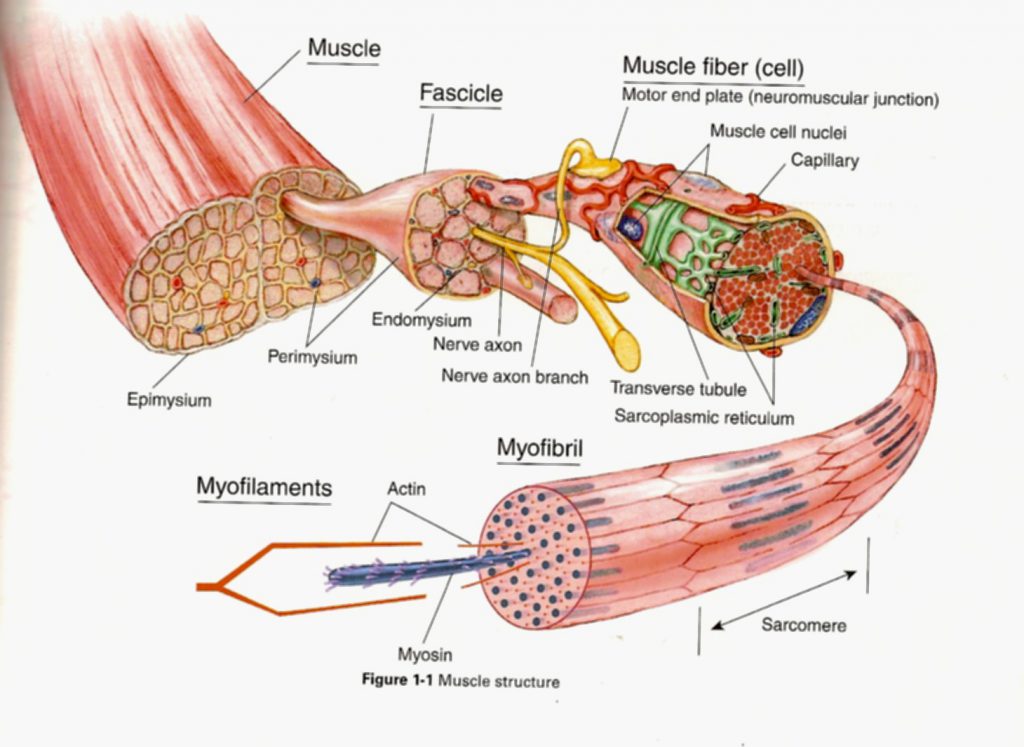
A Muscle Is a Set Of Thousands Of Thousands of Independent Structures Working In Sync. CREDIT: Functional Anatomy Blog
What Is Happening Physiologically When We Gain Strength (Muscle Contractile Component)
The Main Physiological adaptations in response to resistance training in terms of the contractile component of our muscles are listed below (see a full review showcasing these). With this said, just about every aspect of what makes our muscle work will adapt in response to resistance training (49 mins into this video covers this pretty well). These factors will contribute to our ability to increase strength. We can think of these muscular adaptations as increasing our overall potential to produce force. Without having an optimised neural system (as talked about in parts 1.1 & 1.2) we will never be able to produce a maximum amount of force. That’s why muscle size isn’t the only factor that contributes to strength.
- Increased Muscle Size (i.e. Muscle cross-sectional area via hypertrophy).
- Change in Muscle architecture (i.e. pennation angle)
- Fibre type shifts (e.g. selective hypertrophy of fast-twitch fibres through adaptations on the fibre continuum)
- ATP site changes (e.g. possible changes in energy sources).
- Mitochondrial number (depending on the type of training; although this is more related to endurance).
- Capillary density (i.e. Bloodflow changes).
- Molecular-adaptations (e.g Calcium sensitivity, protein synthesis, cell signalling pathways).
Increased Muscle Size (Hypertrophy)
When our muscles increase in size as a result of resistance training, there is one main mechanism that allows this to occur. This is known as muscular hypertrophy. Hypertrophy is an increase in the size of our individual muscle fibres, as opposed to the addition of new muscle fibres (which is known as hyperplasia). An increase in muscle size has been shown to directly correlate with an increase in overall strength.
An important factor to consider with this component of resistance training adaptations is the benefits of muscular size on overall quality of life (many individual trials have shown this in specific populations e.g. Here & Here). The most compelling highlights of these benefits comes from the evidence on functional muscular decline with ageing. This evidence suggests that muscle loss with age is one of the main determinants of a decrease in function and a major component in frailty. It suggests that a loss of body mass > 40% is fatal. We have highlighted in the past how ageing isn’t necessarily a death sentence. What we know is that with strength & resistance training we can slow the effects of ageing and have highly positive benefits on overall quality of life.
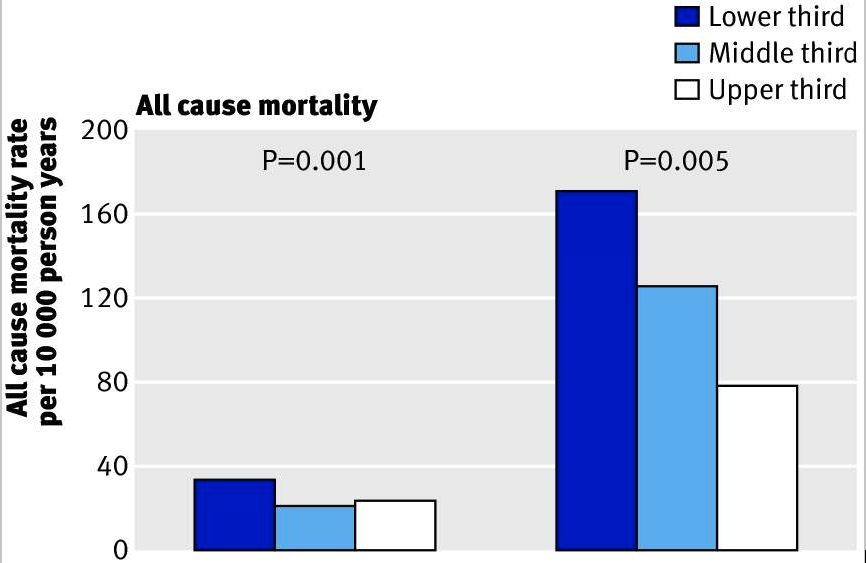
Age-adjusted death rates per 10 000 person-years from all causes by thirds of muscular strength and age groups [CREDIT: Ruiz et al. 2008]
The same principle of muscle loss with age can be seen in a decrease inactivity (highlighted below). Essentially, because our body is an adaptive organism, it is important to continue challenging it with resistance stimulus in order for muscular adaptations to remain. If we don’t do this, we risk experiencing some of the negative effects of decreased muscular size associated with ageing.
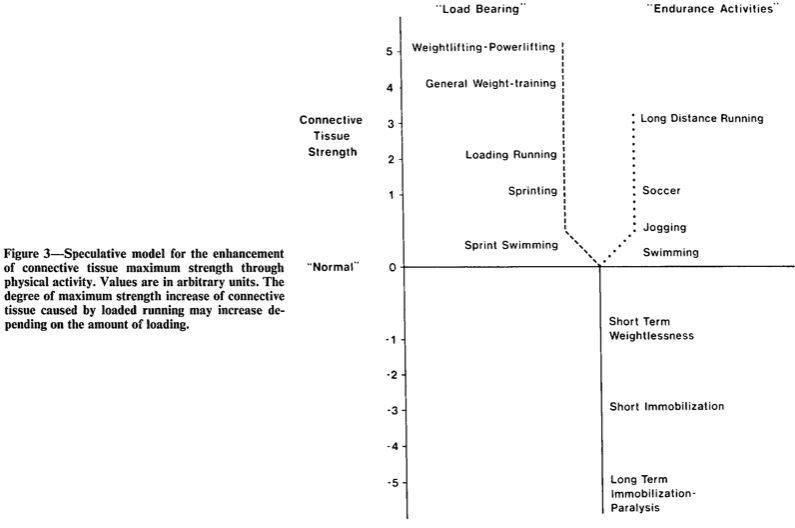
Muscle hypertrophy is by far the most physically observable change that occurs as a result of strength training. It is often the most sought after consequence of strength training for the large majority of trainees. The key to creating this adaptation in muscular hypertrophy is overall ‘volume’. It is also incredibly important to highlight what life is like when this part of our strength begins to decline. This is why we spoke about the effects of inactivity and ageing above. We find this to be an incredibly important factor for our own patients, as a large majority of them are suffering the consequences of a predominantly sedentary life and thus could benefit from gaining some muscular hypertrophy.
More Muscle = More Strength??
It seems simple right, the more muscle we have the more weight we should be able to lift?
Well, then why wasn’t the person to lift the most weight in history a professional bodybuilder? Bodybuilders are judged based on their overall muscularity, so it would make sense that if all that went into strength was simply an increase in muscle mass then the worlds greatest bodybuilder would also be very likely the be one of the strongest people on the planet. Now there are many problems with this hypothetical, as strength is a relative definition. What are we using to measure strength? If we look at conventional testing measures (i.e. a specific lift), our ability to express strength is highly task-specific based on: 1) our skill in performing the movement, 2) our unique anatomy & 3) Our level of fatigue (we touched on all of these factors in part 1.1). To further highlight this point we can draw on the anecdotal accounts of professional bodybuilders. In this account one of the worlds greatest bodybuilders, Jay Cutler suggests that maximum strength wasn’t a big factor in his ability to develop maximum muscularity. Instead, it was his overall use of training volume at optimal intensities to elicit the response he desired (We spoke a bit about this in our introduction). This reinforces what we discussed in previous articles, showing us that muscularity is only a part of what goes into generating maximum strength.
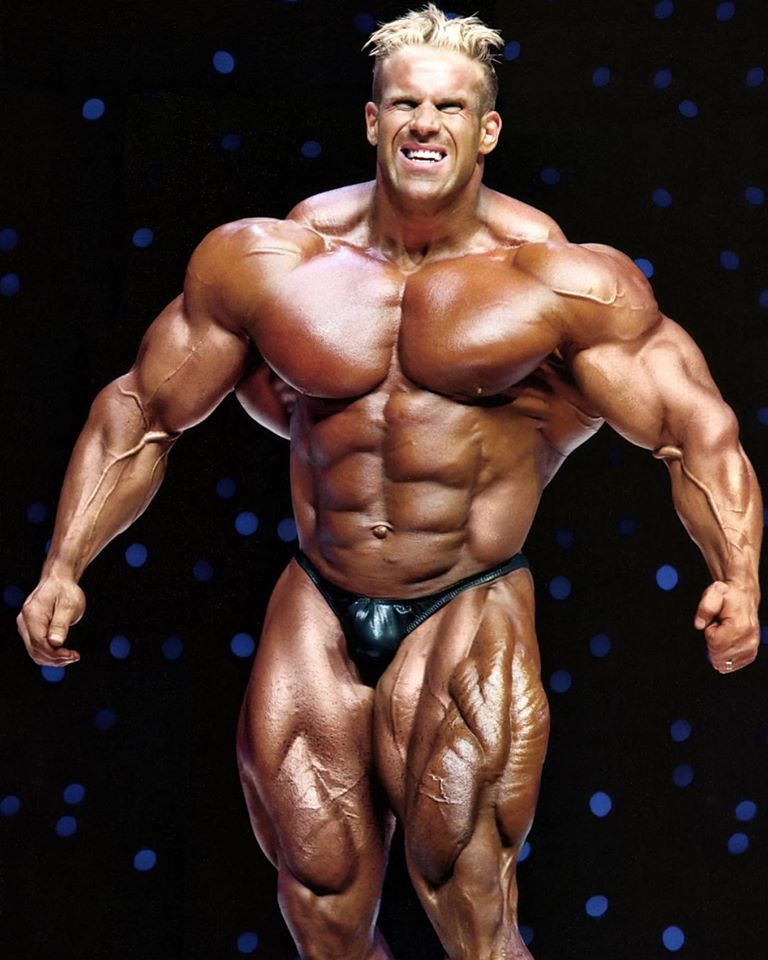
Many People Are Very Surprised To Hear That Someone Like Jay Cutler is Nowhere Near The Strongest Person On The Planet
Change in Muscle Architecture
We said above that essentially all of the structural and functional components in muscle will adapt to resistance training. This includes the actual architecture of our muscle fibre, in terms of how it produces force, based on the type of training we do (referred to as muscle pennation angle). These changes can be specific to either speed of contraction, or maximal force production (i.e. train for speed and the muscle adapts to this, train for strength and the muscle adapts differently for this). This is independent of any increase in size, the energy production of the muscle or any neural adaptations that increase force production.

An Example Of Pennation Angle in The Muscle Based In Two Different Muscles. The Hamstring Muscle Shows An Example Of A Speed Muscle, Where The Quad Shows An Example Of a Force Producing Muscle (Due To Difference In Total Size & Ability TO Shorten/ Lengthen)
Fibre Type Shifts
Certain muscle fibres in our body require different properties, depending on the function that they need to perform. Muscles that need to contract constantly (e.g. Postural muscle fibres such as our spinal erectors) need to be able to maintain a low force output for a longer period of time. This low force output is suited to being a type I, slow-twitch muscle fibre. This type of muscle fibre is more efficient at utilising aerobic metabolism, which is a slower source of energy, that is much more efficient at utilising energy. On the other end of the muscle fibre type spectrum is what is known as a fast-twitch, type II muscle fibre. These fibres are able to contract more rapidly than a type I muscle fibre. Within this type II classification, there is both a type IIa & type IIx fibre. A type IIa muscle fibre is the largest muscle fibre in the body and can utilise both aerobic and anaerobic metabolism. A type IIx fibre is the fastest pure fibre, mainly due to it’s ability to utilise anaerobic metabolism. Utilising anaerobic metabolism means that they fatigue much more rapidly. There are 6 different sub-classifications of Muscle Fibres within the type I & II classification existing on more of a continuum, than a discrete exact ‘type’. No whole muscle in our body is 100% in any of these classifications (even individual muscle fibres can have all of these different types within). This is important to note, as with training these fibre types can gradually shift their properties based on the demands they face.
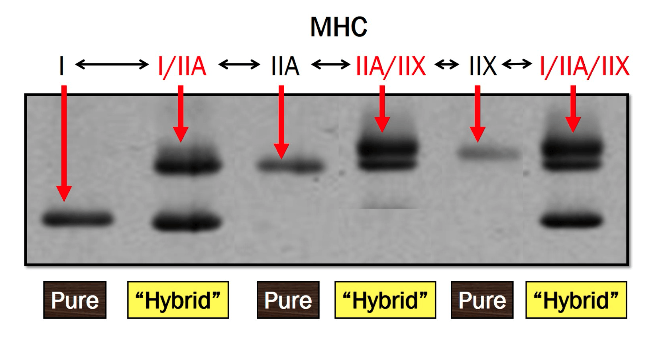
The 6 Different Types Of Muscle Fibres Mapped Out on a Continuum
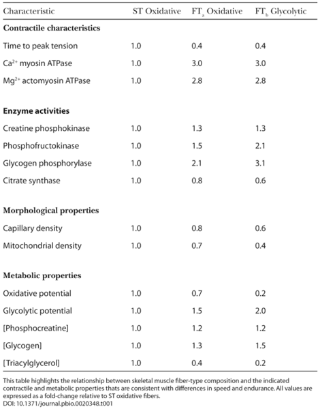
Muscle Fibre Property Differences With The Various Types Of Fibres. These Helps To Showcase the Various adaptations that Can Occur To a Muscle With Training.
These fibre types have been shown to be able to shift, depending on the adaptations we place on the body. Another example of the SAID principle at work. Looking at these fibre type shifts, allows us to see is another component in our adaptations to the muscle that contributes quite significantly to performance, yet is far less observable. It also highlights why it is so important to train ‘functionally’ with a specific goal in mind. For the rehab trainee, it means performing your rehab, constantly progressing toward the activity you wish to get back to. In a lot of our clients, that might simply look like getting up and down from a chair with one leg, aiming to do things more powerfully each and every time they train. For the performance-oriented individual, it means knowing what adaptation you are looking for with your training and how to best go about causing the body to create this (e.g. Speed VS Strength VS Size VS Sporting Performance), , considering fatigue and your overall capacity to recover.
To go into more of specifics on fibre type shifts, you can check out all of Andy Galpin’s great work on this topic: Part 1, Part 2 & Part 3. The key concept in all of this information is that while a large part of our fibre type composition is genetically determined, there is still a huge capacity for us to impact our own makeup. This will depend on the type of training we do. Take a simple look at the kind of training that can be done to stimulate each muscle fibre type.

An Example Of Just How Different Fibre Composition Can Be In Elite Trained Athletes (CREDIT: Bagley et al. 2016)
ATP Site changes
This is related to the changes in fibre type and represents one of the many shifts that occurs when a fibre type begins to move along the spectrum of slow-fast. When a certain adaptable fibre is placed under a demand the requires more long duration, slower contractions, the fibre will begin to adapt by improving its ability to utilise aerobic fuel sources (i.e. create more mitochondria). Conversely, when conditions on the muscle are shifted towards anaerobic demands (i.e. exercise less than 15-90 seconds) the muscle fibre will begin to adapt to utilising glucose via anaerobic metabolism (e.g. increase number of Creatine Kinase enzymes, improve glucose storage capacity).
In response to resistance training, which tends to be far more on the anaerobic ‘fast’ side of the muscle fibre type continuum, we see an increase in glycolytic capacity of the muscle fibres and ultimately a shift to more fast-twitch fibres. This is important to remember, as any exercise that goes into the aerobic domain (i.e. longer than around 90 seconds of continuous effort) will begin to cause more aerobic ‘slow-twitch’ adaptations. While this isn’t an all or nothing thing, it is definitely worth mentioning as it highlights the importance of rest in training and helps to provide an understanding of why training needs to be periodised, so as the ensure interfering adaptations don’t occur.
Mitochondrial Changes
Mitochondria are the aerobic energy-producing organelles in our cells. They are incredibly important for overall health and recovery, as they regulate our ability to use aerobic energy. Exercise has been shown to be incredibly important in stimulating and maintaining mitochondrial function due to its energy-producing demands. Mitochondrial changes in the muscle are one of the factors involved in the overall fibre type change described above.
Resistance training, while typically requiring anaerobic demands (i.e. bouts of exercise lasting longer than 90 seconds), still stimulates mitochondria, as aerobic energy is required to clear away the waste products from anaerobic metabolism. Evidence suggests that resistance training does stimulate mitochondrial adaptations.
As outlined in the muscle fibre type section, our muscles will adapt to both aerobic and anaerobic demands. This is not an all or nothing thing. Our muscles can adapt concurrently to both sets of stimulus at different times. This is referred to as concurrent training. There is a popular notion that when we perform endurance training, we will block the biochemical pathway that leads to us being able to maximally build muscle [We talked about this in our introduction]. While this is certainly the case acutely (i.e. in the same few hours within a session), what we actually know is that this is one of many adaptations taking place that cause improvement. The research on concurrent training has shown us that in theory, it should be impossible to be elite at both strength/ power dominated sports and endurance sports, but the examples of these people exist [BONUS: Boundaries of human performance to show what is actually possible].
This is important, as while mitochondria don’t necessarily play a role in our ability to exert maximal strength in the moment (in the absence of fatigue) they do play an incredibly important role in our ability to recover. This could be in recovering from a bout of intense activity in order to exert maximal strength once again, or it could be recovering from a training session and causing the body to adapt. In this way, mitochondria are absolutely essential to our overall health and ability to get stronger.
Molecular Adaptations
While the molecular adaptations in the muscle aren’t part of the contractile component itself, there are incredibly important to showing how our adaptations take place overall. From an upregulation in protein synthesis to an increase in dealing with waste byproducts from energy metabolism, molecular adaptations are what creates the biochemical response needed to elicit change in the muscle fibre. While there are too many specific adaptations to list here, the key concept remains that strength training elicits a biochemical response, that causes our body to adapt. As we said before, just about every factor that goes into muscular function will adapt in response to resistance training, as our muscular system is extremely plastic (i.e. has the capacity to change). These biochemical responses can be acute and only last for 24-48 hours, or more chronic. The key to ensuring these adaptations remain is continuing to train frequently enough to keep the body creating these responses.
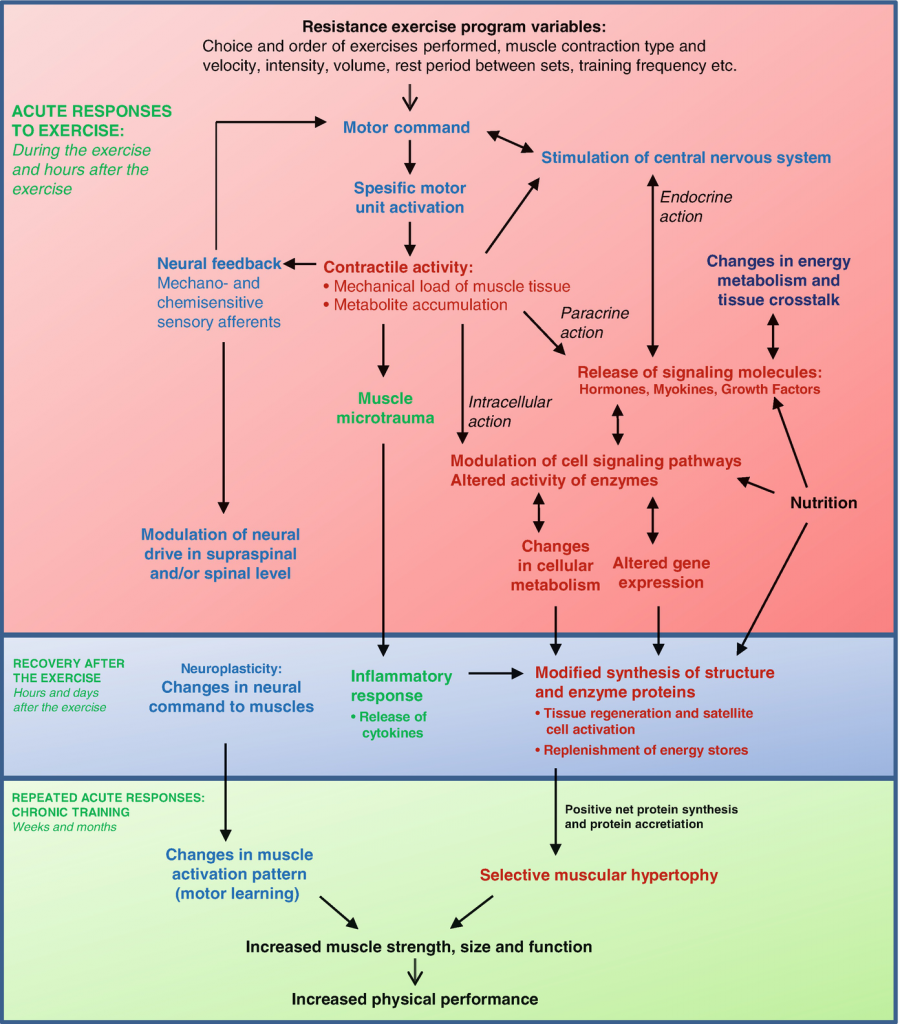
A Brief Summary Of What Goes on Biochemically In Response To Resistance Training – Source:
Capillary Density
When muscles contract, they required blood flow in order to continuously supply the resources needed for them to continue contracting. This includes energy substrates such as glucose, structural molecules in the form of proteins, as well as the transportation of waste products that occur as a result of the contraction. Capillaries supply the muscle with the blood needed to transport these various substrates around the body and become more engaged during strength training. Research has shown that over time our body will adapt to strength training by increasing the overall amount of capillarization in the muscle. This has big implications in overall muscle hypertrophy and maintenance of muscle size. It also has a significant impact on our metabolic health, as it allows our muscles to more effectively utilise energy substrate like glucose. This can have implications on factors that contribute to chronic disease such as lowering insulin resistance.
So How Do I Actually Build Muscle?
To answer this completely would take another article series in and of itself. What we will say is this: Volume is KING (the right amount of volume that is)! Like anything, the devil is in the details, so we have provided one of the most useful, scientifically supported guides available: The Renaissance Periodisation Hypertrophy Training Hub. The bottom line is that muscle gain (& subsequently) strength remains one of the best things we can pursue for our health, metabolism, overall quality of life & risk of injury/ disease. It helps us to decrease the negative effects of ageing (see our many articles linked above showcasing this), ultimately extending our functional lifespan through allowing our body to continue functioning optimally. As always we must remember the goal in mind, while having a consideration for how our body actually operates in order to adapt to to training stimulus [TRY: 6 Physiological principles that dictate how we improve with training for a high-level overview of this].
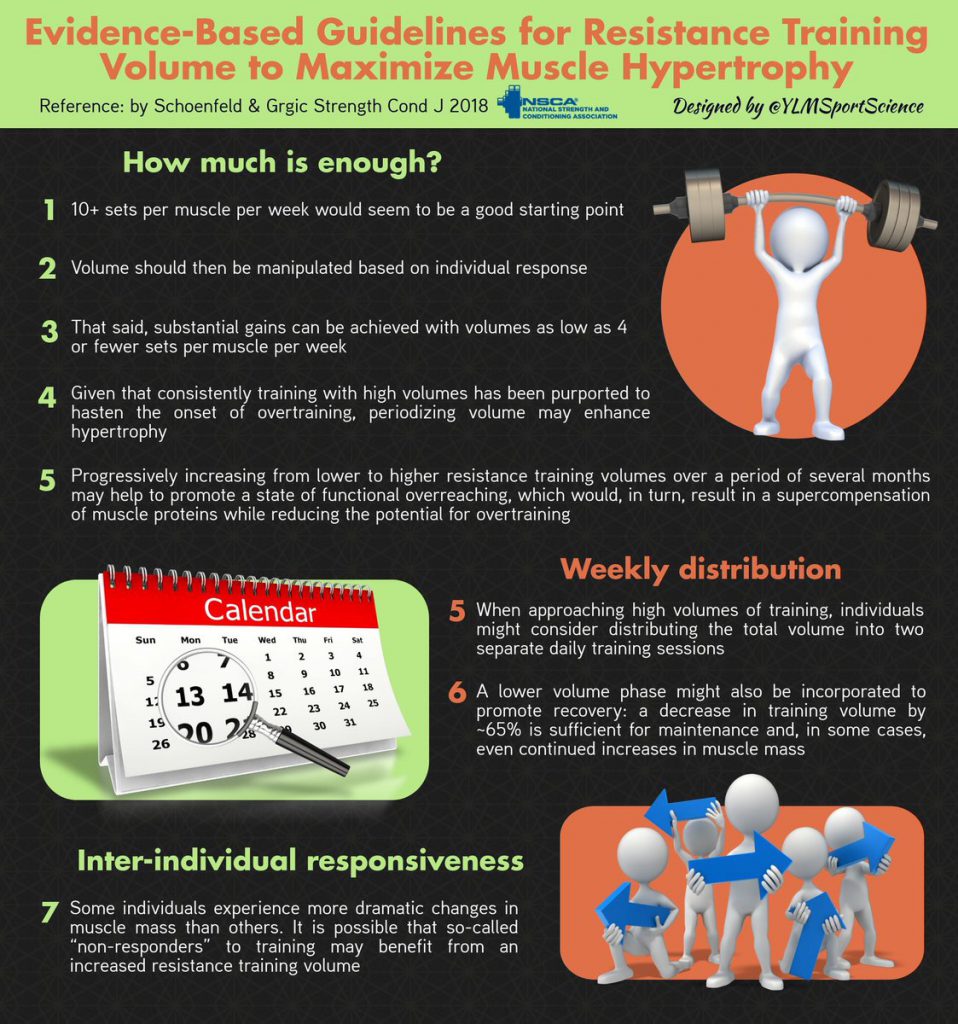
A Very Sound General Overview Of Strength Training For Optimum Muscularity (Recommendation is to split this up over 3-10 sessions per week)
Conclusion
After all of this, we want to sum up by saying ONE thing: We adapt to the specific demands that we place on our body.
This is the most fundamental concept of all of human performance and is something that is critical to our work as Exercise & Rehab Professionals. To ensure we get the demands right, in order to elicit the response we desire we need to consider three key things.
- We need to know exactly where we are at now
- We must know the exact result we desire.
- We need to be incredibly specific about understanding the exact physiological mechanisms that go into creating this result.
And that is where the difficulty lies. That is why to be able to give proper exercise programs that produce a desired result, we must undergo at least a 4-year course of higher education, with thousands of hours of clinical practice. Human Physiology is complex and producing a result that changes it requires a firm grasp of the concepts.
To illustrate this, let’s take an example of someone who simply wants to get out of pain. Perhaps they have been told by their doctor that they should improve their ‘strength’ and try resistance exercise. This is incredibly general. What type of resistance exercise? What kind of adaptation do they want? What can they do now? How do they manage their pain with training? If it hurts them to do certain exercises, should they continue doing it? What activity do they want to be able to do for the rest of their life? All of these questions are things that should be asked when looking to improve strength. We have highlighted today and in previous parts precisely why we need to be specific about what we want. If this person didn’t answer any of these questions and simply underwent ‘strength’ training they would likely not get the result they desire. We see this all the time in people who go to their local gym and decide that they should use the machines at the gym, following the instructions on the equipment. What usually happens is that they certainly improve their strength, but their issue doesn’t go away. Maybe their pain decreases a little bit, but the movement issue that caused the pain to come about certainly didn’t. This form of artificial, non-specific strength training becomes a problem, as the person avoids any activity that causes their pain to worsen. It’s not just the lack of strength that caused their pain, it’s their ability to move (which underlies strength as highlighted in part 1.2) that did. So the ‘strength’ itself didn’t address the issue. That’s not to say that strength doesn’t have a litany of general benefits. It’s more to highlight that we need to know the exact result we want, while understanding where we are now and precisely what physiological mechanisms need to be manipulated in order to produce that result!
With all of that said, this was only a small number of the overall adaptations our body experiences. We covered what is arguably the most notable adaptations that are important to take note of, due to their capacity to influence overall performance, along with the role they play in injury. Understanding how muscle adapts is crucial to sustaining long term performance & preventing injury for good. Yet, there is arguable an even more important factor in the prevention of injury (Our connective tissue). We will cover this in great detail in part 3!
Summary
- Muscles are a complex multi-structured organ with thousands of moving parts.
- Muscles adapt specifically to the demands that are placed to them.
- More muscle does not mean more strength.
- There are a whole host of specific adaptations that occur to the muscle itself in response to training.
- Muscle fibre type shifts occur on a continuum from fast to slow.
- The key to building muscle is the overall volume that is placed on it up to a certain dosage, in order to produce an optimal biochemical response.
- Adaptation of muscle is incredibly complex, with many different physiological mechanisms controlling it’s adaptation.
Resources
- Adaptation of Skeletal Muscle To Resistance Training
- The Independent structure of Muscle (Complexity in action)
- Muscle Function & ageing
- The Ultimate Guide to Fibre type changes
- The Rules of Fitness, 6 Physiological Principles that Dictate How We Get Better at Anything
- Association Between Muscular Strength & Mortality in Men
